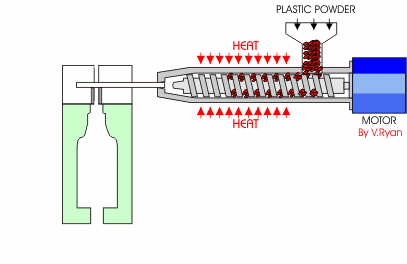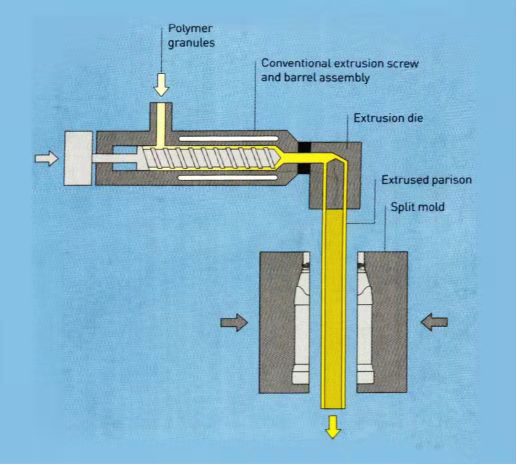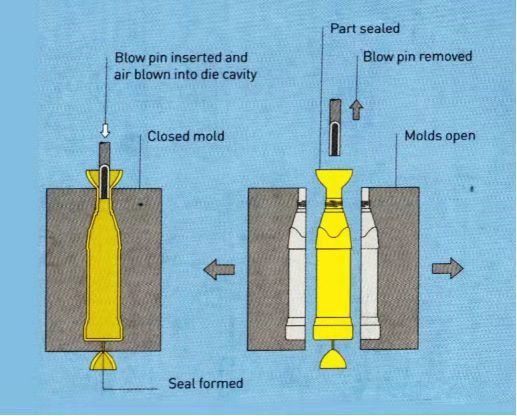The plastic packaging material molding process in the cosmetics industry is mainly divided into two categories: injection molding and blow molding.
Injection Molding
What is the injection molding process?
Injection molding is a process of heating and plasticizing the plastic (heating and melting into a fluid, plasticity), and then applying pressure to inject it into a closed mold space, allowing it to cool and solidify in the mold, to produce a product with the same shape as the mold. It is suitable for mass production of parts with complex shapes.
Characteristics of injection molding process:
1. Fast production speed, high efficiency, high degree of operation automation
2. The product has high precision, and the appearance error is very small
3. Able to produce parts with complex shapes
4. High mold cost
Most our airless bottle, double-wall lotion bottle are produced by injection process.
Blow molding
Characteristics of blow molding process:
Drawing lessons from the traditional glass blowing process, blow molding uses compressed air with a certain pressure to inflate and cool the preform (semi-finished tubular plastic body) in the mold into a molding process for hollow products. It is suitable for mass production of hollow plastic containers.
What are the characteristics of the blow molding process?
1. Simple production method, high production efficiency and automation
2. Low dimensional accuracy
3. There are certain restrictions on the shape of the product
4. Low mold cost
According to different production steps and processes, blow molding can be divided into three types: extrusion blowing, injection blowing, and injection stretch blowing.
The first is squeezing and blowing. As the name suggests, extrusion blow has two major steps: extrusion and blow molding.
The first step is to extrude the parison-mold closure. The extrusion device continues to squeeze to form a hollow tubular parison. When the parison is extruded to a predetermined length, the top of the parison is cut to a length suitable for a single piece, and the molds on the left and right sides are closed.
The second step, air introduction-trimming. Compressed air is injected into the preform through the mandrel to inflate. The parison closely adheres to the inner wall of the mold to cool and shape, and the product is removed from the mold, and the second trimming is performed. The cost of extrusion and blowing equipment and molds is relatively low, and the production cost is also relatively low.
However, flashing occurs during the production process, and the mouth and bottom of the bottle need to be trimmed mechanically or manually, and sometimes the mouth of the bottle needs to be polished and trimmed.
Extrusion-blow molded plastic bottles have a parting line (a linear protrusion) at the bottom, and the mouth of the bottle is rough and not smooth, so some have the risk of liquid leakage. Such bottles are usually made of PE material and are used in cosmetics such as foam bottles, body lotions, shampoos and conditioners.
The second type is injection blowing, which has two major steps: injection-blow molding.
Step 1: Preform injection-mold closure.
Use the injection molding process to produce a bottomed parison, and the console rotates 120° to the blow molding link.
The mold is closed, and compressed air is introduced into the parison through the mandrel pores for blow molding.
Step 2: Preform inflation-cooling and demoulding.
After the blow-molded product is completely cured and molded, the console rotates 120° to demold the product. No need for secondary trimming, so the degree of automation and production efficiency are high. Because the bottle is blown from an injection-molded parison, the mouth of the bottle is flat and the bottle has better sealing properties, such as the TB07 blowing bottle series.
The third type is note pulling and blowing. It is divided into three steps: injection-stretching-blow molding.
Different from the turntable type of injection blowing, injection stretch blowing is an assembly line production.
Step 1: Preform injection-mold closure
Put the preform produced by injection into the blow mold
Insert the stretch rod and close the mold left and right
Step 2: Stretching-Blowing-Cooling and demoulding
The stretching rod is longitudinally stretched, while air is injected through the stretching rod for lateral stretching
Cooling and shaping, demoulding and taking out the product
Injection stretch blowing is the one with the highest quality, precision and cost in the blow molding process.
At present, there are two production methods in the injection stretch blowing process, called: one-step method and two-step method. Injection molding and blow molding are completed together in a one-step method, and the two steps are completed independently as a two-step method.
Compared with the two-step method, the one-step method is completed in one-step equipment from the raw materials to the finished product. The production process is simple and no secondary heating is allowed, so the energy consumption is lower.
The two-step method requires first preform injection, and then secondary processing on the blow molding machine. Blow molding requires secondary heating of the cooled preform, so the energy consumption is high.
Most of the information comes from the CiE beauty supply chain
Post time: Dec-29-2021




